Users
Users categories
In MaadiX there are different categories of users that you can activate or manage on your system. Each one has different privileges and functions, which we will help you understand on this page so that you know better know how to use them
Control panel administrator: this is the only account with unlimited data management privileges through the control panel. This account is automatically created at the same time as the server and cannot be deleted.
Superuser: even though this account does not have access through the control panel, it is hierarchically more important than the previous one, since it has unlimited privileges over the whole system (“root user” of Linux). It cannot be removed, so you never lose root access to the system.
Regular users: accounts that the administrator can create through the control panel, to whom the administrator can grant permissions to use or to access the various services.
Postmaster user: for each domain activated in the control panel, a postmaster account is created. This type of account will have the possibility to create and manage email accounts associated with the same domain.
Email accounts: email accounts will have access to the control panel with the only privilege of viewing or editing their own data (password, name, automatic forwarding…).
Control panel administrator
The control panel administrator is probably the account you will use the most, since it has all the privileges within the control panel. This account can create, configure and delete all other accounts as well as domains, email accounts and any other data that can be managed from the control panel
This account is created automatically and cannot be deleted. Otherwise, you would lose access to the control panel. When we build the server from MaadiX, we also create this account, assigning it a random password that for security reasons you will have to change the first time you access the control panel.
All parameters, except the username, can be edited at any time from the ‘Profile’ page of the control panel. You can access this page through the menu in the upper right hand corner.
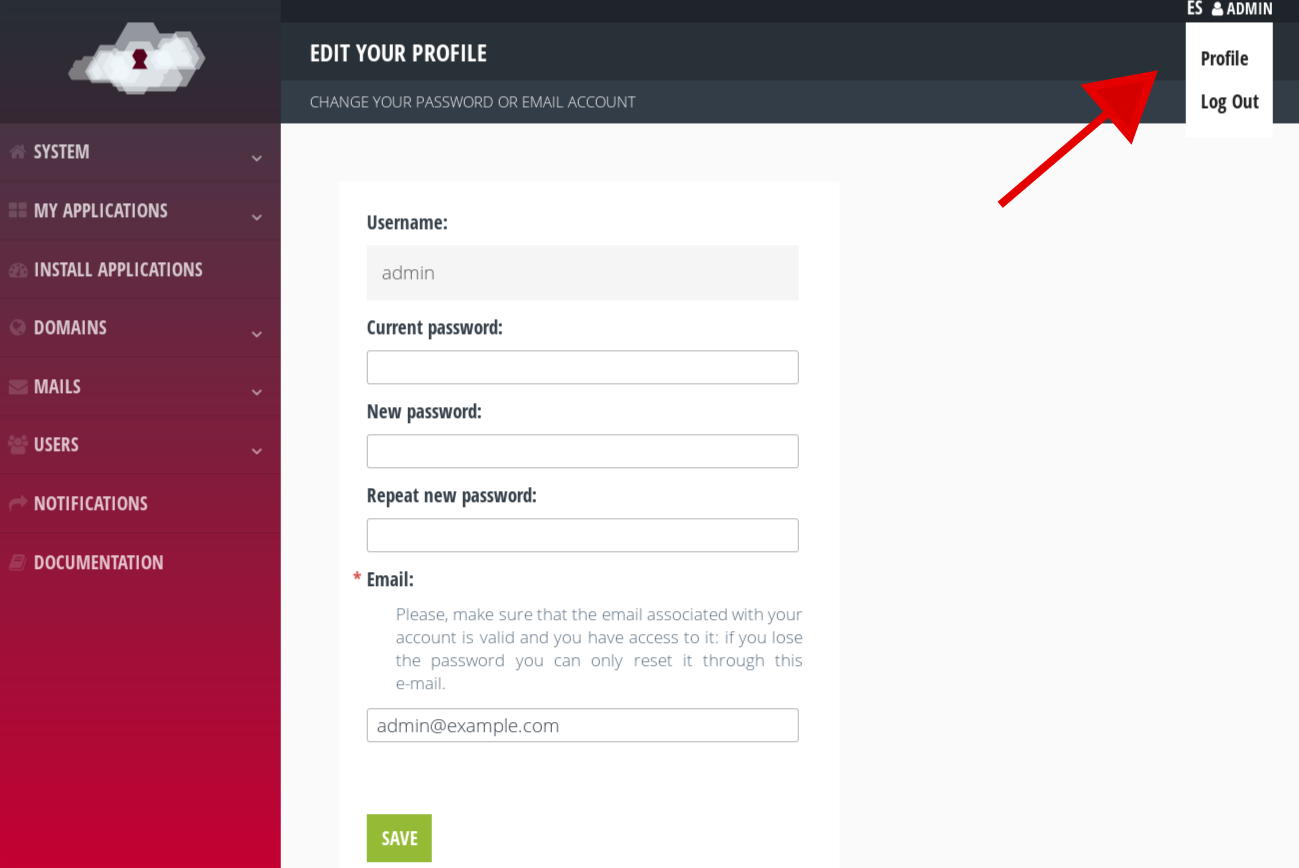
Control panel administrator details.
It is very important that the email associated with this account is valid and that you have access to it, since the system uses it to send certain notifications or important functionalities, such as password recovery.
Superuser
This account does not have access to the control panel. This is the root account that can operate through the terminal (via SSH) and has unlimited privileges over the entire system. For this reason it is hierarchically more important than the previous one, since it has the power to edit and delete any file. This account cannot be deleted.
For security reasons, it is advisable to limit the use of this account when possible and not to share it with external people. Instead, it is recommended to use ordinary accounts with limited access to the system. More details on how to create and use this type of account can be found in this document.
Like the control panel administration account, the Superuser account is automatically created in the server creation process, and until you change its password during the control panel activation process, it will be an inactive account, without any access.
Once activated, this account will be able to access the server through a SFTP or SSH connection. This account has unlimited privileges in the system, so it can perform any of the following operations, which are not allowed from the control panel:
To access all the folders in the system through a STFP or SSH connection.
Modify, install or delete any application (SSH)
Read, modify, delete or execute any file on the system, even if it is not the proprietary (SSH).
Create other ‘root’ accounts
Shut down or restart the server.
Regular users
These accounts are created by the control panel’s admin account and can be assigned different degrees of permissions and access.
SFTP only access: they will be able to access the server only by SFTP and will be confined to their own personal folder. They cannot access the rest of the system and do not have SSH access. They can be assigned as webmasters to one or more domains.
Access by SSH and SFTP: they will be able to access the server both with a SFTP client and by SSH. Unlike the previous accounts they will not be confined to their directory and will be able to access other paths for which they are given permission. They can be assigned as webmasters to one or more domains.
PhpMyAdmin accounts: they can be given permission to access this application, if it is installed. For security reasons, this application is protected by a double password: 1. the one of an account with phpMyAdmin access and 2. the one of a mysql user with database access.
VPN accounts: you can enable a VPN account so that their connection to the server is direct and secure. They can also use this connection to connect to any other Internet address.
Jitsi accounts: you can enable a Jitsi account so that they can start video call rooms in Jitsi, if you have the Jitsi application installed.
Postmaster users
This account only has the power to manage other email accounts associated with its domain. It can create, modify and delete e-mail addresses through the control panel. This type of account is extremely useful to allow these tasks without having to give someone else all the privileges.
Postmaster accounts are created by default for each domain that is enabled in the control panel, with a random password that can be edited later.
To operate from the control panel, postmaster accounts will have to identify themselves using the username postmaster@yourdomain.com and the password assigned to them.
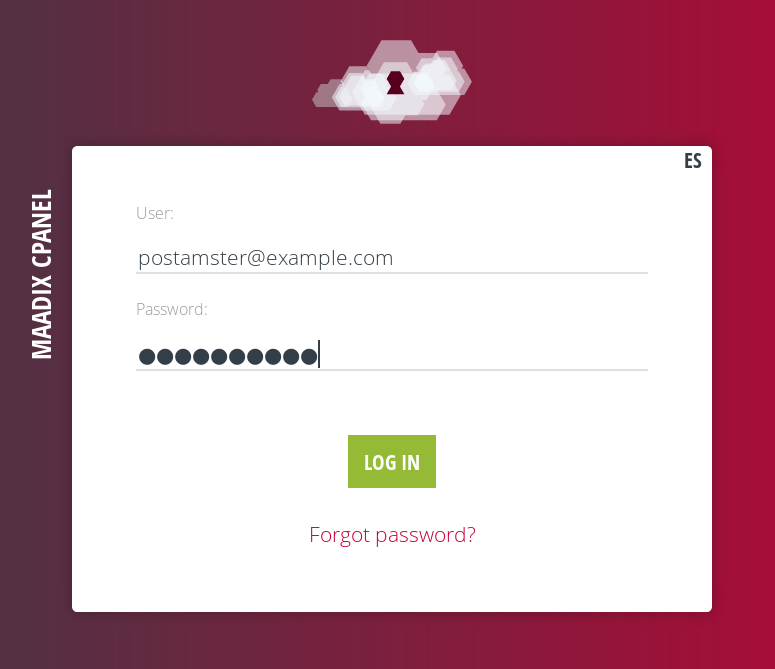
Postmaster login.
Once inside the control panel, postmaster accounts will have a slightly different interface than the administrator’s. They will only have access to the editing features of the email accounts associated with their domain, as well as editing their own profile.
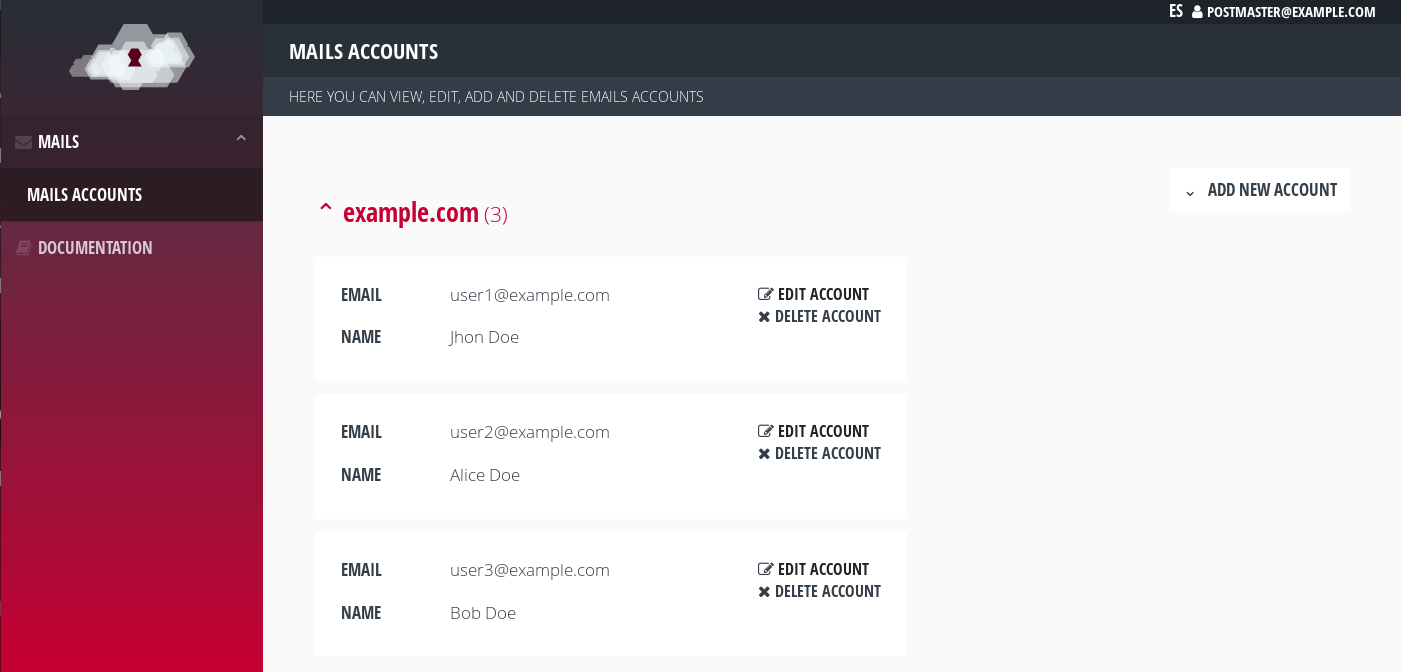
Control panel logged in to the Postmaster account.
Email accounts
Email accounts created in the control panel can be managed directly by their owners. The person who has an activated email will be able to enter the control panel inserting his or her email account as user name and the password assigned to it.
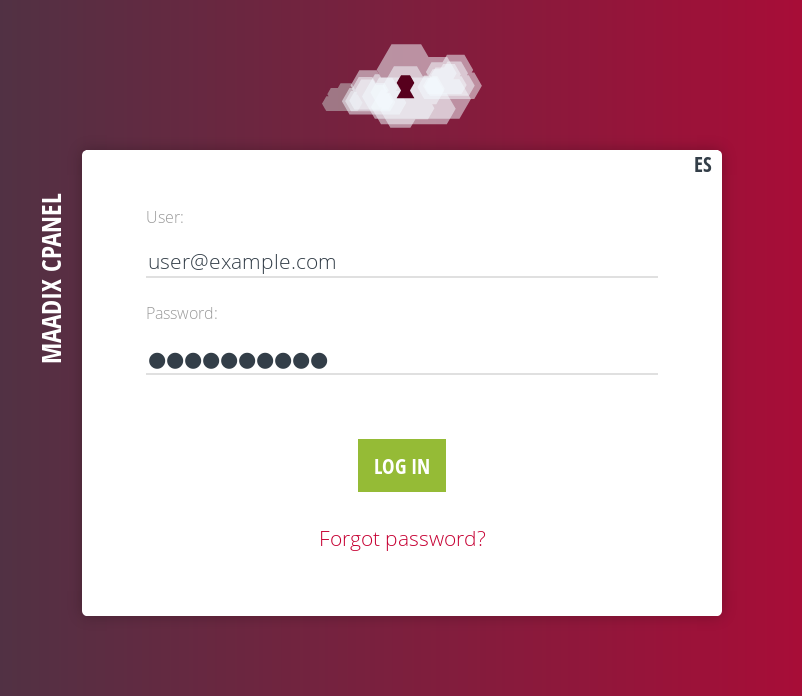
Email accounts access.
Editing privileges are limited to the user’s own email account. He or she will be able to change the password, first and last name, as well as set or disable forwarding and auto-reply features. The email account user can also access the data for the configuration of the account in an email client on his or her own device (Thunderbird, Outlook…)
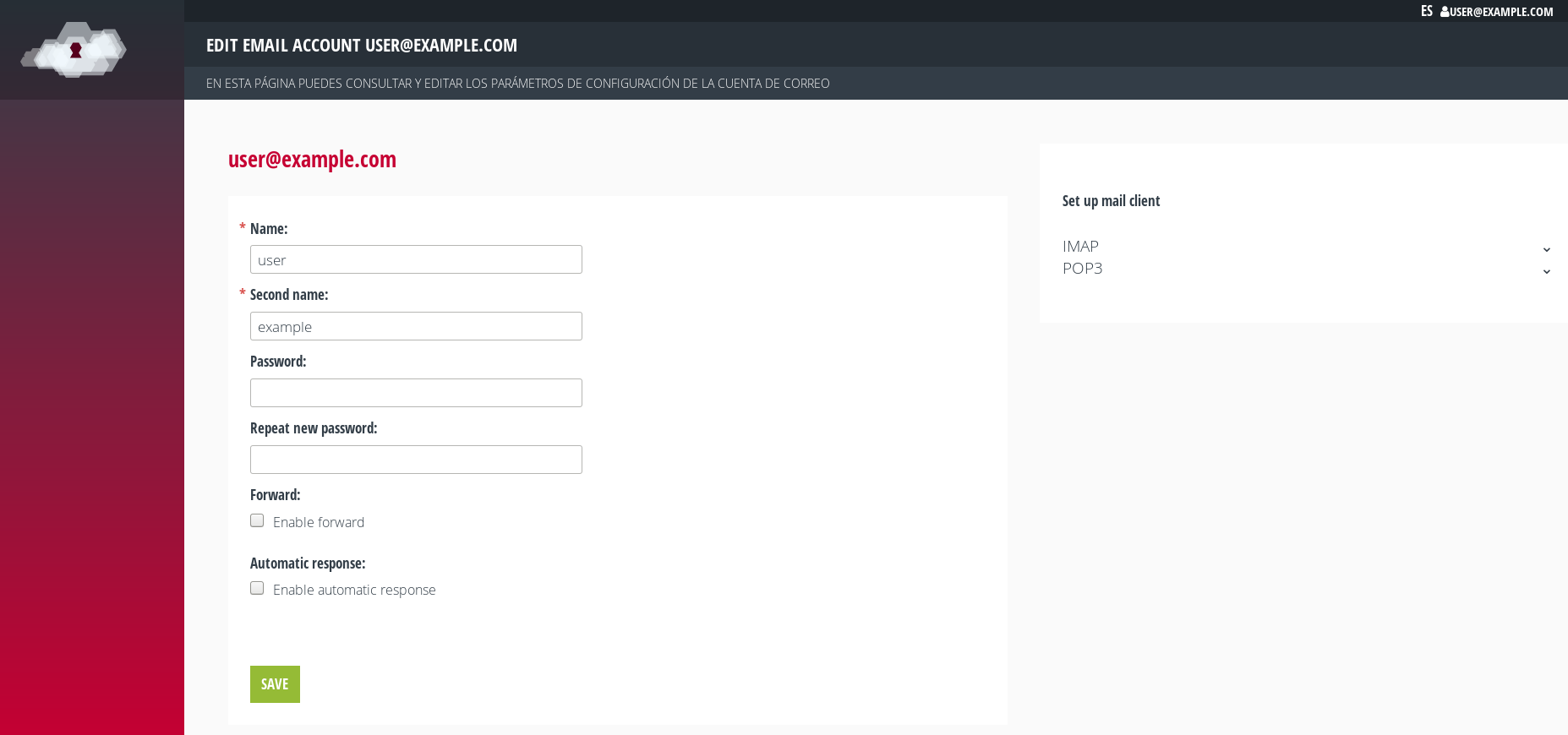
Email accounts details.